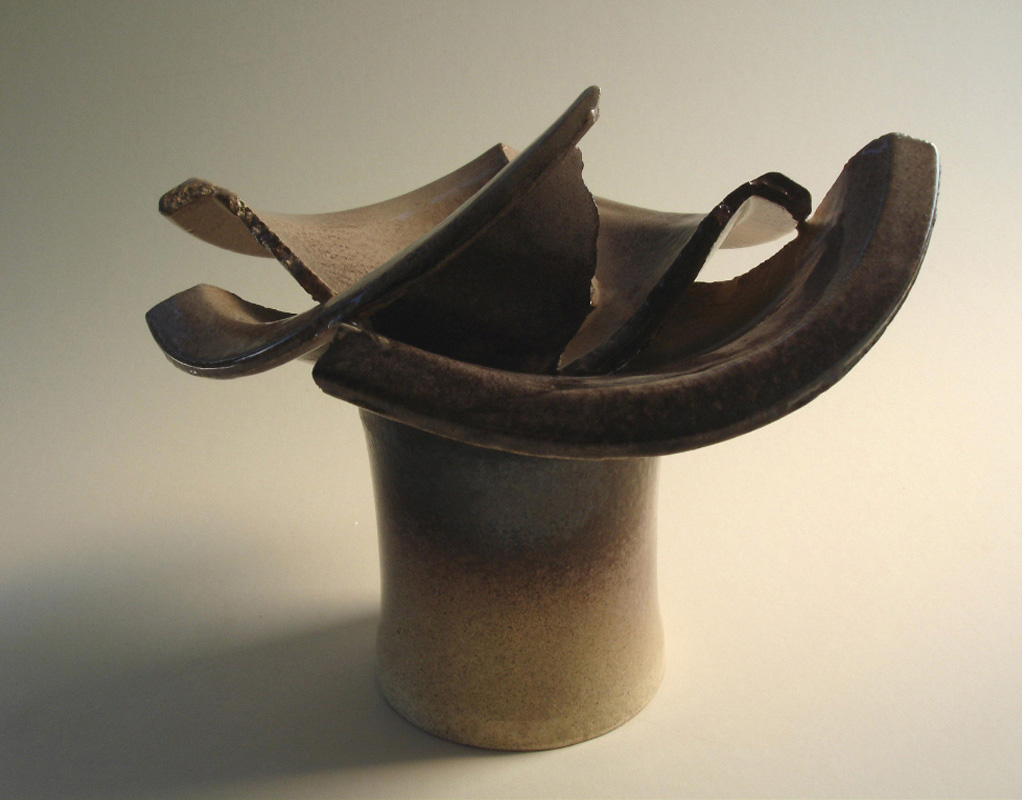
Judith Schwartz speaks with Beril Anilanmert, a celebrated artist who resides in Istanbul, Turkey. Beril was a Professor and Dean at Mimar Sinan University and a member of many boards that further the arts in society. She has had 23 major solo exhibitions and has exhibited internationally while simultaneously lecturing at symposiums and workshops. She is a member of the IAC and hosted a congress that was known to be one of the best congresses the International Academy of Ceramics ever had.
Beril works with a variety of mediums. She not only works in clay but in paint and printmaking. In clay, she creates these large-scale forms that soar into space as she manipulates these elements that are cut and reconstructed, and reattached to create new forms. Recently, she had a major retrospective of her work and the following interview delves into her robust art practice.
Beril Anilanmert: Well, first of all, I didn't want to call it retrospective because I thought that when I say retrospective, it seems to me as if it's going to end, whereas I'm still working. So I named it my Logbook. It's a term used in maritime. And it's a book that records whatever is on the voyage of the vessel. So what I wanted to do is my artistic voyage, and I want to present this to the visitors. There were about 130 pieces, maybe even more.
It was interesting for me to see all of them together. It was very well received by the media, but what I would say it was displayed for three months long. And now the same exhibit is again moved to a different city. Now it's exhibited in Ankara and is still going on.
Beril Anilanmert: Well, my husband was an artist, painter, and a professor at the same university that I was in, so we had a lot to share. And as for education, academic position, well, it is rather a creative and a research-based activity. So it's the same thing with the studio work too. I find it the same way. When you start working, you start with researching, and then you start to use your creativeness to present what you want to do.
So, I find it correlating rather feeding each other. For example, in the university, you are always in contact with the younger generation with new fresh ideas coming to you and you share your knowledge, your network, and your experiences with students. It's a rather good interaction and it builds up in you. Whereas in your studio you're all alone. But again, the same thing, the same research-based creative activities interact with each other.
Beril Anilanmert: Those works I name Transformations. The main idea that I want to convey is the dynamic effect the object has in it. I want the viewer to feel the energy that is captured in that work. And it's created by the contrast and the tensions of the reconstructed pieces. They are composed in such a way that they form a tension within the piece, and it creates a certain kind of energy that I want to convey to the viewer.
Beril Anilanmert: It was very interesting for me to see all of them covering so many years. Each has its own story, of course, but what I saw in those works is that I had so much that I didn't even exhibit in that show.
The amount of work that I have done, I was astonished myself how I have done all those years. But it was interesting. It was very well received by the media. This exhibit was the first one, the opening exhibit of the gallery. After the pandemic, the galleries were all closed. So, when we announced the exhibit, people were still hesitant to go into closed areas. So, we had two openings. One was for the press, and then about two weeks later, we had the next opening. And it was wonderful. We had wonderful feedback.
Beril Anilanmert: Yes, clay is my primary material, and I find it very enriching. It has 2-D quality and 3-D qualities. So, with 2-D qualities, it gives me satisfaction to paint, to use my love of color. My painting interest in ceramic, especially using glazes, is my joy of life.
But with the sculptural effect, its space, and it's what I enjoy, sculptural work. You have the volume and the space, you play with them, and it gives me satisfaction, too. But clay really fulfills my life. When I use color in paper, the color just sinks, stays there, whereas in ceramics, it's lively, it still has some magic in it.
And of course, fire has its own word on it, I would say. But still, clay coloring and working with volumes, it really is very satisfactory. In paperwork, drawing for instance, I try to use just black ink on washi paper because I can get that liveliness on paper. It's blacker and whiter than color on paper.
Beril Anilanmert: Yes, it was. And I also think that free ink drawing is so direct without interference of color or other processes.
Beril Anilanmert: Thank you for having me.
